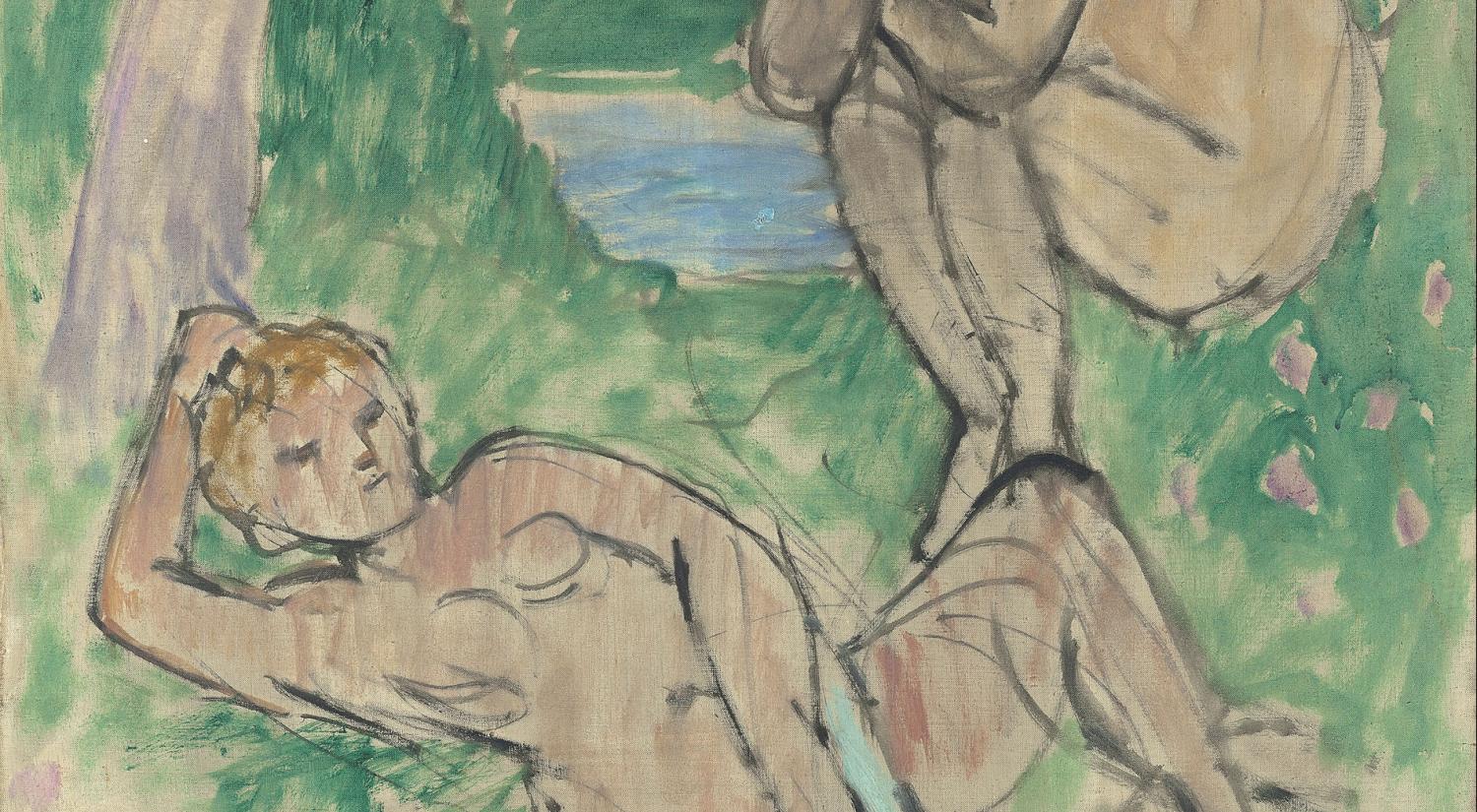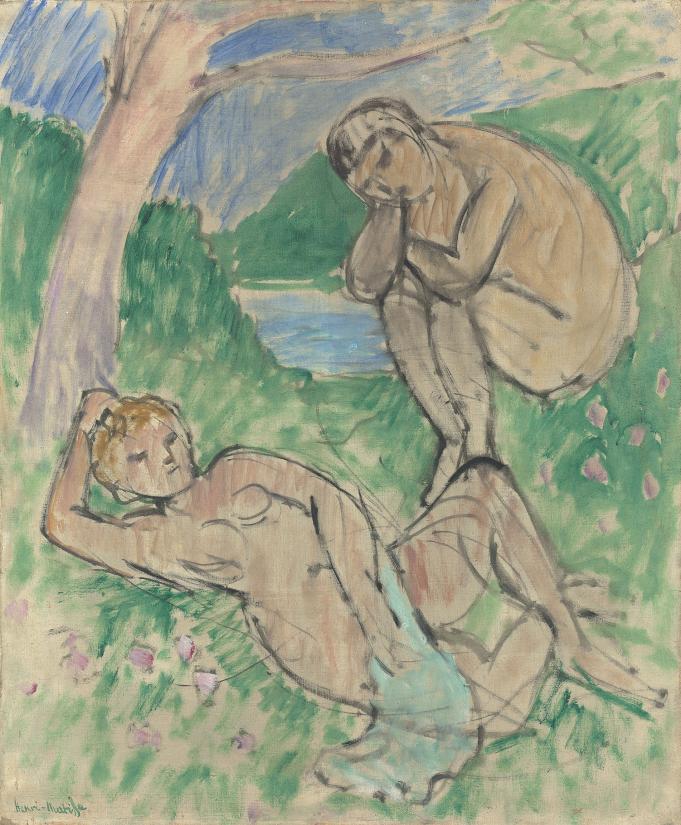The National Gallery of Denmark, SMK, has one of the biggest collections of art by Henri Matisse outside France. Now the museum adds another important work by Matisse to its collection, which thus numbers 25 paintings and sculptures in addition to many works on paper. In 1928, the Danish engineer, politician and art collector Johannes Rump gifted his collection of modern French art to the museum, and this generous donation continues to account for the largest share of the museum’s Matisse collection.
Nymph and Faun from 1911 not only adds one more painting to the SMK’s Matisse collection but also makes it more complete, because the work has a special connection to Denmark and links to the SMK’s collection and history. Nymph and Faun is among the largest single donations to the SMK in recent times.
The Danish connection
The painting was brought to Denmark in 1919 by the major Danish art collector Christian Tetzen-Lund, who until 1924 owned one of the world’s biggest and most important Matisse collections in his private home in Copenhagen. Other works in the SMK’s French collection originally belonged to Tetzen-Lund, before they were bought by Johannes Rump and later donated to the SMK.
With the acquisition of Nymph and Faun the museum can now present a more complete and nuanced picture of Tetzen-Lund’s renowned collection, which is an important chapter in Danish cultural and art history. The work was acquired in a private sale at Christie’s.
‘Since the late 1990s we have been on the lookout for this painting, because it had been part of a Danish collection in the early 20th century. At the time we were unable to locate it. Overall, early paintings by Henri Matisse are very rarely traded, so we feel extremely fortunate to have been offered the work. We look forward to sharing this beautiful and highly interesting painting with the museum’s many Danish and international visitors,’ says Mikkel Bogh, director of the SMK.
An important painting
Nymph and Faun is an important key to understanding Matisse’s art during a period when he was seeking new paths and experimenting with new expressions. Through its motif, two bathers in a landscape, the picture relates to other figure compositions in the museum’s collection. However, with its loosely applied, almost vibrant brush strokes and sketch-like character the picture also exemplifies an important dimension of Matisse’s experimentation, which until now has not been represented in the SMK’s collection.
That the painting was of central importance to Matisse himself is evident from its inclusion, along with other key contemporaneous works, in the large, revolutionizing painting The Red Studio from 1911 (The Museum of Modern Art, New York), which also features other important works in the SMK’s collection.
One of the great masters
Matisse (1869–1954) is considered one of the great masters of 20th-century art. He is known in particular for powerful images created with an unerring grasp of the beauty of colour and line. Throughout his life, Matisse maintained a searching approach to his work, continually testing and challenging his own expression.




